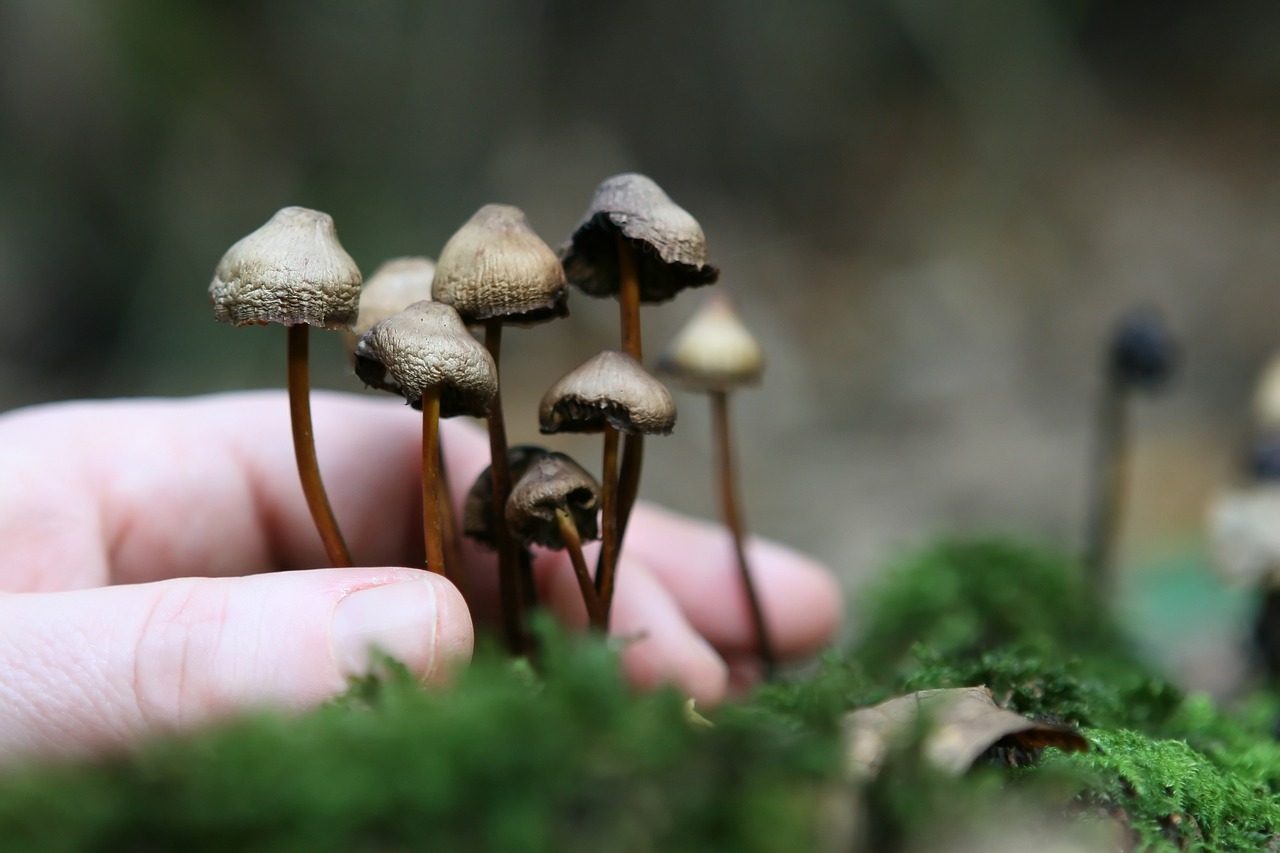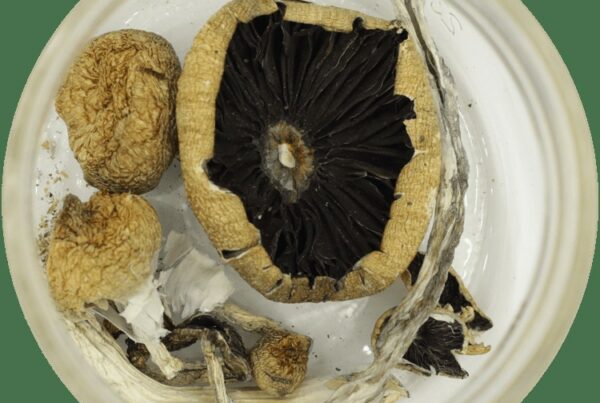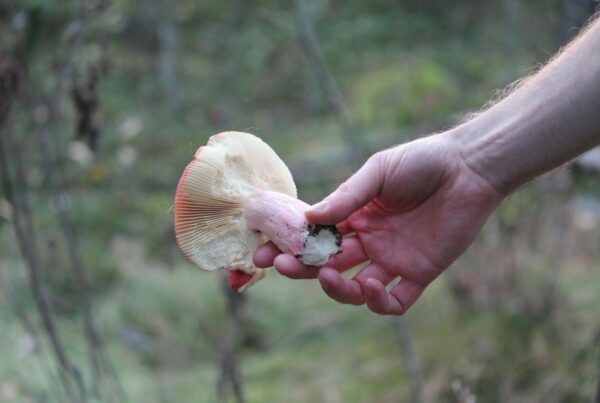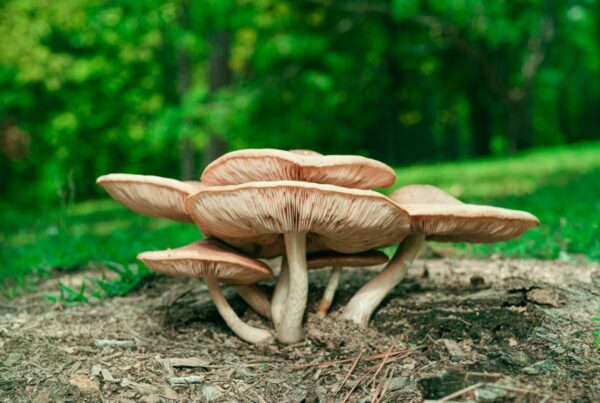Deciphering Mycelium
Mycelium, functioning as the digestive system for fungi, is the root structure of mushrooms. It seeks, processes, and converts nutrients into a form the fungus can absorb, and in turn, it nourishes the fungus. The byproduct of this process enriches the surrounding soil, dispensing essential nutrients for other foliage and generating a nutrient-rich biomass suitable for gardening mulch.
Besides their role in mushroom growth, mycelium networks play a crucial role in the health and development of many land plants, including trees. For example, tree roots and fungi engage in a symbiotic exchange: the tree provides the fungus with carbon in the form of sugars, and in exchange, the fungus provides the tree with essential minerals such as nitrogen and phosphorus. Explore more about this relationship here.
Fascinatingly, mycelium networks act as an underground communication network among plants, similar to our brain’s neural networks. Emerging scientific research suggests that plants and trees might have basic nervous systems that fungi could potentially influence, affecting processes like communication, memory, and learning. Moreover, mycelium contributes to soil health by decomposing decaying organic matter and neutralizing any present pollutants.
If cultivating magic mushrooms piques your interest, understanding mycelium growth is essential. Although the cultivation process might seem daunting for beginners, learning about mycelium is a significant initial step. While Buy Dmt Canada offers the convenience of purchasing mushrooms online, knowing about mycelium can enrich your cultivation journey.
Understanding Mycelium Growth
When fungal spores find a suitable growth environment, they begin the development of two mycelium types. The primary or monokaryotic mycelium, the first type, is characterized by a single nucleus in each cell and is typically not visible to the naked eye. The second type, known as secondary or dikaryotic mycelium, is visible and houses two nuclei in each cell.
Upon sprouting, the fungal spores initiate the growth of what is known as the monokaryotic mycelium, or primary mycelium. When it comes into contact with another compatible monokaryotic mycelium, they can fuse to form the dikaryotic mycelium, which is the second stage. This secondary mycelium is the one capable of generating mushrooms or sclerotia.
Types of Mycelia
Mycelia can be classified into three categories, two of which signify successful cultivation.
- Rhizomorphic mycelia spread out like strings. They are composed of units known as hyphae, and the network of grouped hyphae is referred to as the rhizomorphs. Rhizomorphic mycelia first expand and then send back chemical signals to the colony indicating that the upcoming area is optimal for nutrient acquisition. The rest of the mycelia then move to follow. The hyphae at the forefront of the rhizomorphic mycelia release peroxidase, a substance that breaks down the material ahead of it for food. The hyphae then stretch over the material, spreading the nutrients throughout the colony. This type of mycelia is preferred by many cultivators because of the high probability of mushroom production as the Rhizomorphic mycelia emerge from the substrate.
- Tomentose, or “Fluffy” mycelia, bear many similarities to Rhizomorphic mycelia. However, the arrangement of the fluffy mycelia strands is distinctive. Even though the strands may not be instantly visible, they are indeed there. Their cotton-ball-like appearance suggests that the strands are bunched together. The development of your mycelia into tomentose or rhizomorphic traits depends largely on the cultivation environment. The influence of the type of mycelia on the growth rate or the yield is a topic of ongoing debate among cultivators.
- Aerial mycelia appear when the growing conditions are less than ideal. In such situations, the mycelia tend to grow outward, rather than spreading over the medium or forming a ball. Frequently mistaken for bacterial contamination, this type of mycelia can interfere with your mushroom cultivation, leading to weaker, smaller mushrooms. Aerial mycelia typically arise due to inadequate fresh air circulation and excessive moisture.
Is it Mould or Mycelium?
Being able to distinguish between mould and mycelium is essential. If you notice green, blue, grey, or black patches on or within your fruiting box, it’s likely that your culture is contaminated. Discoloration is the main sign to look out for. However, be aware that blue spots could simply be bruises.
Cobweb moulds are typically quite conspicuous. Instead of the bright The mycelium is usually characterized by a greyish color and a fluffy, fibrous texture. Although cobweb and green molds pose no harm to humans, they can adversely impact the health of mushrooms.
Buy Dmt Canada: Your Reliable Resource for Mushroom Information
Whenever you think of psychedelic mushrooms in Canada, remember Buy Dmt Canada. We are committed to providing detailed and useful information to ensure you have a safe and enjoyable mushroom experience.





